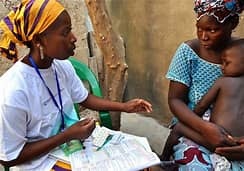Staff Reporter
The world faces a healthcare workforce crisis, and the available number of health workers does not meet the demand for accessible medical care.
The current number of health practitioners, both globally and locally, needs to be revised to tackle the burden of disease.
South Africa’s health system is overburdened, which significantly impacts the nation’s health, resulting in poor national health outcomes, poor standards of service delivery, long patient waiting times and high rates of healthcare worker burnout.
However, the dire situation can be significantly alleviated with the recognition of the important supporting – but overlooked – role that public health graduates can play, says Dr Jackie Witthuhn, Programme Manager: Public Health at IIE MSA, a brand of The Independent Institute of Education, SA’s leading private higher education provider.
“The role that undergraduate public health graduates, especially non-clinical staff, can play in the healthcare system is often overlooked. However, their skills can make a huge difference to increase public health capacity, freeing up medical staff to focus on patients while also focusing on primary interventions,” she says.
Undergraduate public health qualifications differ from medical or healthcare degrees, focusing mainly on disease detection, surveillance and prevention. The field or discipline aims to reach populations and communities and detect and prevent health problems before they start, rather than waiting to work with people once they are sick. Therefore, the public health approach is based on a preventative health model rather than a curative health model, explains Dr Witthuhn.
“There are many reasons for the health workforce crisis which need to be explored, including the Covid pandemic, which highlighted the structural weaknesses in our healthcare system, including neglecting primary care and prevention. Other reasons for the healthcare workforce crisis include poor workforce planning and a lack of proper planning, including task shifting, which is an approach to help address the shortage of healthcare workers by reallocating available and skilled resources.
“The burden of chronic diseases, including cardiovascular disease, obesity and diabetes, which are increasing at alarming rates, increases the pressure on the healthcare system. Primary prevention can largely prevent these diseases, an approach that emphasises the need for a preventative public health focus and approach. The significant role undergraduate public health graduates can play in this regard is often underestimated.”
South Africa can ensure a proactive approach by utilising existing public health resources more effectively and focusing on non-clinical Public Health graduates.
The question of how to provide an adequate health workforce is a pertinent one. A clear strategy is necessary and can include, among others:
A more integrated approach to the planning and allocating of health workers and task shifting to use non-clinical public health graduates.
Higher education institutions and health services work together to achieve distributed training and develop norms and standards.
A more competent mix of staff per level of care to take stock of the available workforce, their training and skills.
Government and industry recognise qualified staff such as public health undergraduate students who can be responsible for delivering a defined package of essential health interventions aligned to their skills and based on their qualification’s core discipline.
“We have the resources, but we need to start creating a system that can make optimal use of all of them,” says Dr Witthuhn.
“Future health workforce plans should focus on utilising existing healthcare resources and infrastructure considering South Africa’s developmental status. All of the conditions that can make change possible are already in place. Investing in the supporting role of public health graduates and focusing on primary prevention can greatly address the current healthcare workforce shortage to deliver significant health and economic dividends.”
INSIDE EDUCATION






